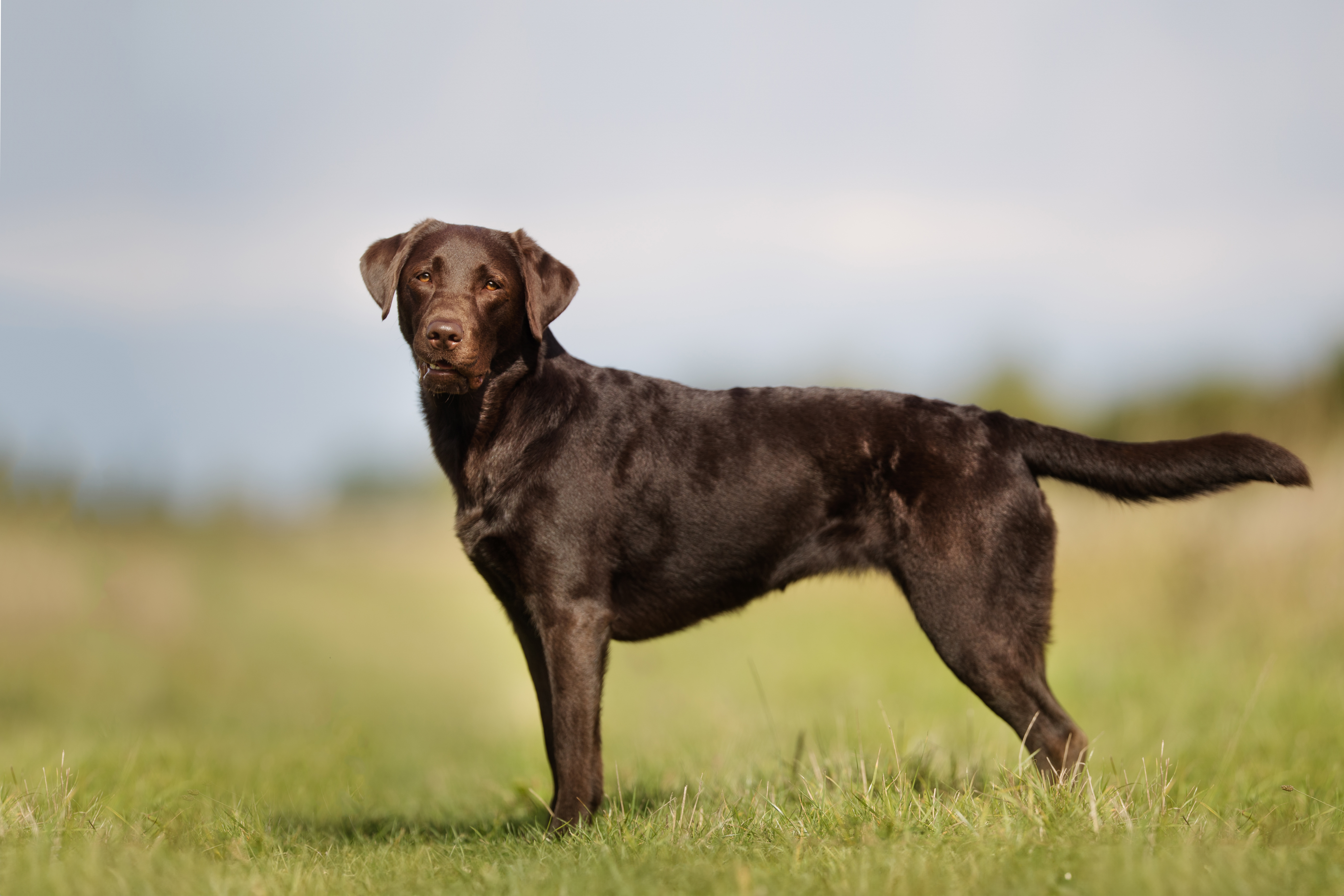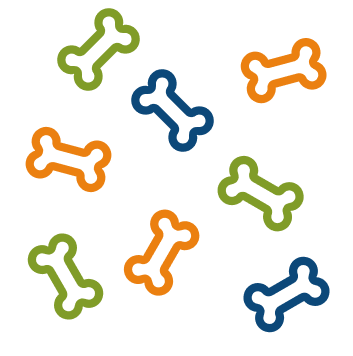
What is the best dog food?
The answer to the above question is subjective and depends on your own preference and that of your dog. We’ve made an overview of the most popular diets in every category, using our extensive range of dog foods.
The Labradoodle is an energetic, intelligent, and friendly dog that is becoming increasingly popular as a family companion. This breed originates from a cross between the Labrador Retriever and the Poodle, originally bred with the goal of creating a hypoallergenic service dog. The Labradoodle combines the Labrador’s work ethic and the Poodle’s intelligence with a charming appearance. Because of their social nature and clever mind, Labradoodles are easy to train, very sporty, and real crowd-pleasers. They enjoy human company and are not well suited to being left alone for long periods, making them a great match for active families. Labradoodles come in different sizes and coat types, ranging from wavy to curly. Their coat sheds considerably less than that of many other breeds and often does not smell, although not every Labradoodle is hypoallergenic. With the right upbringing, training, and care, the Labradoodle is a loyal, playful, and cheerful companion for the whole family.

People with dog allergies react to proteins found in bodily fluids such as saliva, sebum, tears, and urine. These allergens also accumulate in the dog’s fur and skin flakes. When a dog sheds or scratches, these allergens become airborne. Labradoodles have a continually growing coat, which results in less shedding and therefore fewer allergens spreading around the home. Their coat also traps loose hairs, which means you will need to brush them weekly—or even daily.
Although Labradoodles shed less and may cause fewer allergic reactions, they are not 100% hypoallergenic. Reactions vary strongly from person to person. Only the Australian Labradoodle, bred with specific coat goals, may possess hypoallergenic qualities.
The Labradoodle was first developed in Australia in the late 1980s by Wally Conron of the Royal Guide Dog Association. He set out to breed a service dog suitable for people with allergies. The result of crossing a Labrador Retriever with a Poodle was an intelligent, friendly dog with a low-shedding coat. Later, the Australian Labradoodle was refined further by introducing additional breeds to strengthen temperament, coat quality, and working ability. Although widely beloved, the Labradoodle is not yet officially recognized as a pedigree breed.
Labradoodles are known for their friendly, intelligent, and playful temperament. They are social, affectionate, and thrive as family dogs. Their eagerness to learn and cooperative temperament make them suitable for both novice and experienced dog owners. They require plenty of physical exercise and mental stimulation to stay balanced. Many Labradoodles love long walks, swimming, retrieving, and dog sports such as agility or obedience. Because they form strong bonds with humans, they do not enjoy spending long periods alone and often excel as therapy or assistance dogs.
The Labradoodle has an athletic, well-proportioned, and sturdy body with a friendly and expressive appearance. They typically have a long neck, a broad skull, and medium-sized hanging ears that contribute to their soft, approachable look. Their eyes are often round or almond-shaped and radiate intelligence, curiosity, and playfulness.
Labradoodles come in three sizes—mini, medium, and standard—and their coat type can vary between fleece, wool, or curly. The fleece coat is soft and wavy, while the wool coat is denser and more tightly curled. Regardless of the type, many Labradoodles have coats that shed very little and produce minimal odor. Coat colours include cream, apricot, red, chocolate, black, silver, blue, parti, and phantom.
Because their coats continue to grow, regular maintenance is essential to prevent matting. If the coat becomes too long or dense, it can easily form knots, especially around friction areas such as the armpits, tail base, and behind the ears. For this reason, many Labradoodle owners choose to have their dog professionally groomed and trimmed several times a year.
The Labradoodle is an active and energetic breed that requires daily physical and mental stimulation. On average, they need at least 1.5 to 2 hours of exercise per day, which can include long walks, playtime, off-leash running, and interactive activities that challenge their body and mind. Without adequate stimulation, Labradoodles may become restless, vocal, or develop unwanted behaviours such as chewing or digging.
Labradoodles excel in activities like swimming, retrieving, scent work, agility, and obedience training. Their natural enthusiasm and high intelligence make them eager participants in dog sports, and these activities also strengthen the bond with their owner. Mental enrichment—such as puzzle toys, training exercises, scent games, or brain games—is equally important to keep them content and prevent boredom.
Because they thrive on human interaction, Labradoodles enjoy accompanying their owners on hikes, bike rides, or outdoor adventures. A well-exercised Labradoodle is typically a calm, happy companion indoors.
Labradoodles require consistent grooming due to their continuously growing, low-shedding coat. Depending on the coat type, brushing is needed weekly to daily, with fleece and curly coats requiring the most attention. Regular brushing prevents mats and tangles, particularly behind the ears, around the neck, under the legs, and along the tail. Neglecting these areas can lead to painful knots, skin irritation, and even infections.
Professional grooming every 6 to 8 weeks is recommended to keep the coat manageable and healthy. Many owners choose to clip the coat shorter using a dog clipper to reduce maintenance between grooming sessions. A shorter coat not only makes daily brushing easier but also helps prevent excessive matting, especially for more active dogs that spend time outdoors.
Ear care is also essential. Because Labradoodles have hanging ears, moisture and debris can easily become trapped, increasing the risk of ear infections. Regularly checking and gently cleaning the ears helps prevent irritation. Additionally, teeth brushing several times a week and regular nail trimming contribute to overall health and comfort.
Although Labradoodles are generally considered a healthy breed, they may be predisposed to certain hereditary issues. Hip and elbow dysplasia are among the most common concerns and can lead to mobility problems or arthritis later in life. Patella luxation (a loose kneecap) and progressive retinal atrophy (PRA), an eye disease that can cause vision loss, also occur within the breed.
Other possible issues include allergies, food sensitivities, ear infections (due to their floppy ears), and, in some bloodlines, a risk of epilepsy or Addison’s disease. Regular veterinary check-ups, responsible breeding practices, and early detection all play important roles in maintaining a Labradoodle’s long-term health. A balanced diet, appropriate exercise, and weight control are also key factors in preventing joint and metabolic issues.
There are several breeds that resemble the Labradoodle in character, appearance, and energy level, including:
When bringing a Labradoodle into your home, selecting a reputable and responsible breeder is crucial. A reliable breeder will prioritize the long-term health and well-being of the breed and will perform essential health screenings on the parent dogs. These tests include hip and elbow evaluations, patella examinations, and eye tests such as PRA or other hereditary conditions.
A trustworthy breeder will gladly share information about the puppies’ lineage, allow you to meet the parent dogs, and explain the temperament and energy level you can expect. They will also ensure the puppies are properly socialised during the first weeks of life, introducing them to various sounds, environments, and gentle handling to build confidence.
It is also important to discuss coat types and grooming expectations, as some Labradoodles require more maintenance than others. The breeder should honestly advise whether a particular puppy fits your lifestyle. Good breeders will also ask questions about your home environment, daily routine, and experience with dogs to ensure the match is suitable for both you and the puppy.
Choosing a breeder who breeds ethically and responsibly increases the chances of welcoming a healthy, well-balanced Labradoodle into your family.
Because of their friendly, energetic, and intelligent personality, Labradoodles are well suited to owners who are active and able to dedicate time to grooming, training, and exercise. Below are characteristics of owners who are a good match for this breed.
The Labradoodle suits owners who:
This makes the Labradoodle a wonderful choice for active families and people seeking a smart, affectionate companion.
Thanks to its friendly and eager-to-learn nature, the Labradoodle is suitable for both first-time and experienced dog owners. However, there are a few things to consider. Beginners will find the Labradoodle to be a pleasant dog because it is trainable and social. That said, this breed demands a lot of attention, including sufficient exercise, mental stimulation, and coat care. An owner willing to invest time in training and raising the dog will build a strong bond with their companion.
Experienced owners will appreciate the Labradoodle’s intelligence and versatility. This breed is ideal for people who enjoy being active with their dog and want to train for dog sports, tracking, or agility.
The Labradoodle is a wonderful dog for anyone who can invest time, energy, and love into its upbringing and well-being. Both novice and seasoned dog owners can enjoy this playful and loyal breed, as long as they meet its needs.

The answer to the above question is subjective and depends on your own preference and that of your dog. We’ve made an overview of the most popular diets in every category, using our extensive range of dog foods.

This blog article discusses 10 commonly kept medium-sized dog breeds with the most important characteristics associated with these breeds. Dogs in this category have an adult weight between 10-25 kg. This is our top 10 medium dog breeds. Looking for a different breed? Check out our dog breeds page.

If you've ever owned a dog, you'll know that every dog is unique. Dogs can have breed-specific characteristics, though, like joint or coat issues. To support these specific characteristics, Royal Canin has created special nutrition that meets the needs of individual dog breeds. Read all about breed-specific dog food in this article!

Add products to view your basket
We use cookies to help us serve you better and more personally. Functional cookies ensure that the website works properly and have an analytical function. We also use technology to track your behaviour anonymously, both inside and outside our website. Personal data and cookies may be used for personalisation or advertising. Want to know more? Read our privacy policy and cookie statement here. If you choose to reject, we will only place functional and analytical cookies.
